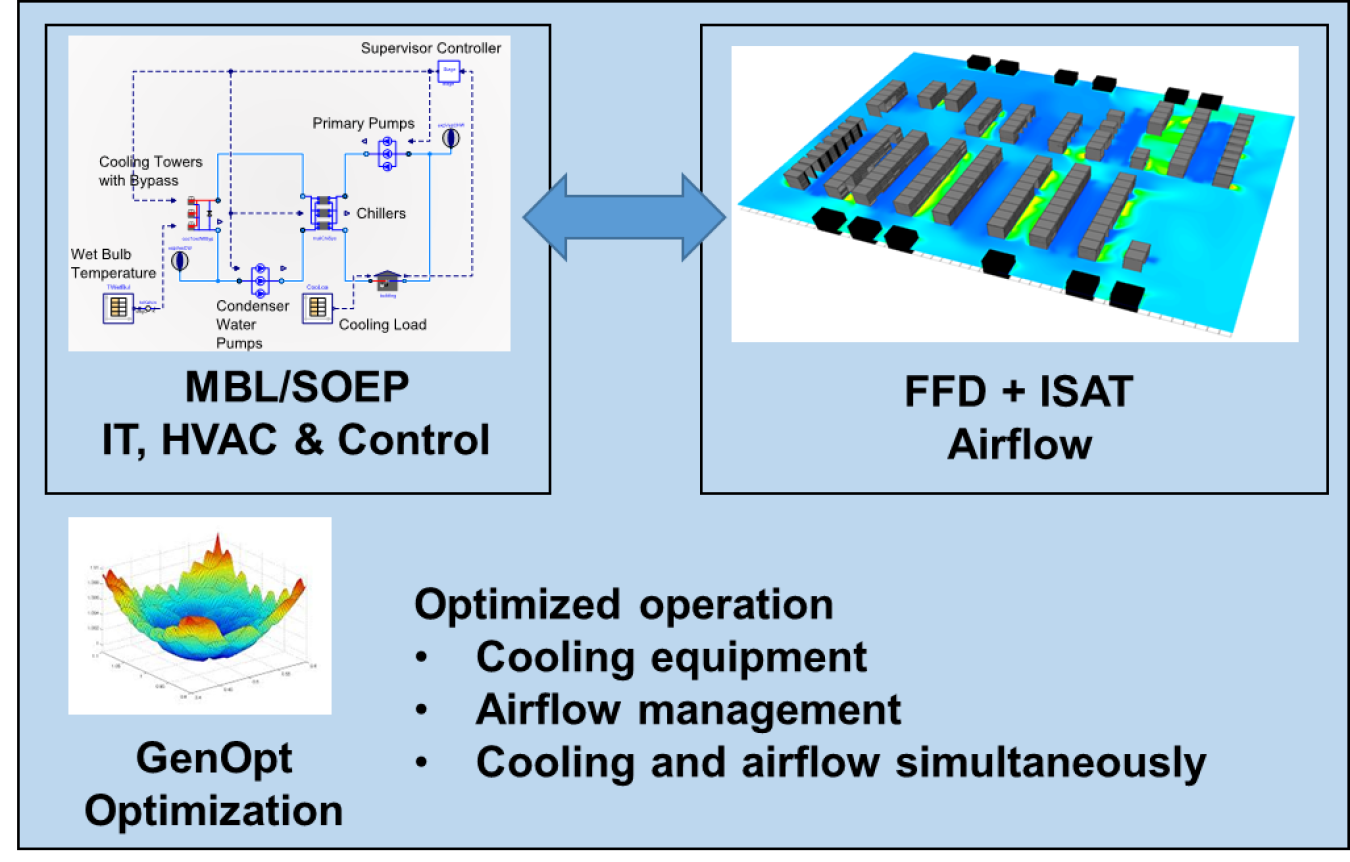Researchers at UC-Boulder are creating an open-source tool for simultaneously optimizing cooling and airflow in data-centers and computer rooms.
November 28, 2016
University of Colorado-Boulder researchers will combine three open-source technologies to create a modeling tool appropriate for designing and operating HVAC and airflow systems for data centers and computer rooms.
Lead Performer: University of Colorado – Boulder, CO
Partners:
-- LBNL – Berkeley, CA
-- Schneider Electric – Andover, MA
DOE Total Funding: $522,460
Cost Share: $92,165
Project Term: FY2016-2019
Funding Type: Building Energy Efficiency Frontiers and Innovations Technologies (BENEFIT) – 2016 (DE-FOA-0001383)
Related Projects: Spawn, OpenBuildingControl, OpenStudio
PROJECT OBJECTIVE
Data centers and large computer rooms account for a significant and growing share of energy consumption in the U.S., reaching 2% of all electricity use in 2013. Cooling is a sizeable fraction of this consumption. Data center operators are very conscious of this significant energy use and readily adopt new analysis and measurement techniques to reduce it. Computer room operators have less time for and expertise in energy efficiency and management, but tend to be technology savvy. Neither constituency has appropriate modeling tools for the task, and if they do, they are proprietary.
In this project, the University of Colorado-Boulder, in partnership with Schneider Electric and Lawrence Berkeley National Laboratory, will create a tool for dynamic cooling and airflow optimization that is customized for the design and operational requirements of data centers and computer rooms by integrating several open-source modeling packages: the Modeling Buildings Library / Spawn-of-EnergyPlus for flexible IT equipment and cooling system modeling; LBNL’s GenOpt for optimization; and the University of Miami’s Fast Fluid Dynamics package for airflow modeling. The team will demonstrate the tool in data centers in Florida and Massachusetts with a target of 30% savings in data center cooling energy consumption compared to state-of-the-art practices.
PROJECT IMPACT
Data center and computer room accounts for 2% of U.S. electricity consumption and this fraction is growing. Operators are conscious of energy consumption and eager to reduce it, but the market for computer room cooling optimization has no existing widely available solution or tool. This project targets 30% savings of data center cooling energy compared to the state-of-the-art practice, with a projected annual savings of 70 TBtu by 2030.
CONTACTS
DOE Technology Manager: Amir Roth, Marina Sofos
Lead Performer: Wangda Zuo, University of Colorado-Boulder

